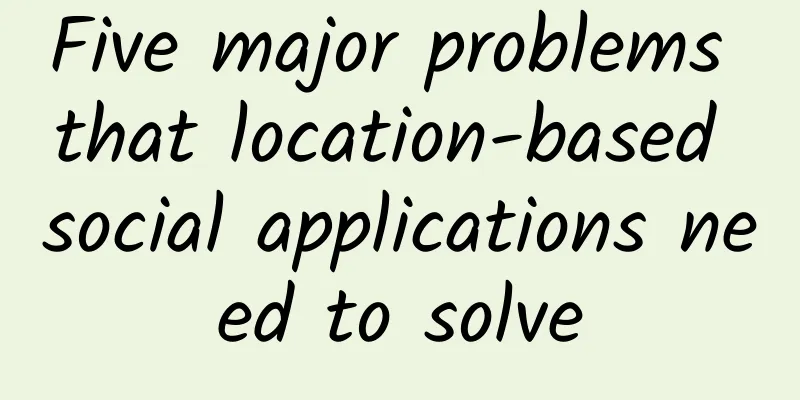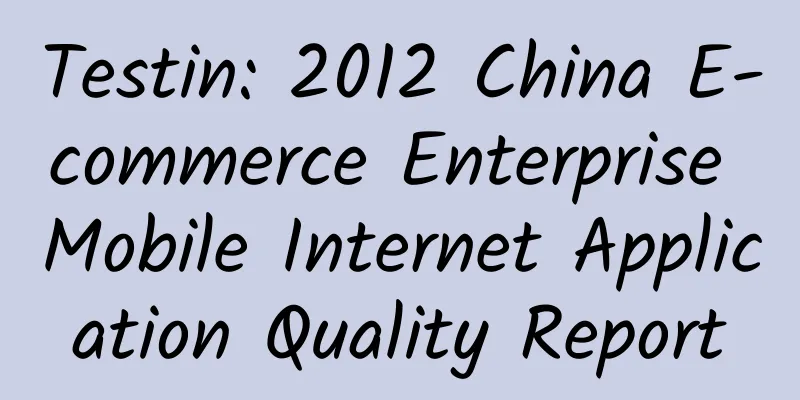Five major problems that location-based social applications need to solve

|
On March 22, 2012, at this year's SXSW interactive conference, no friend found that the application became a clear winner. Well-known technology blogger Robert Scoble said that Highlight seemed to be the most popular application, and about 5% of SXSW attendees used Highlight. However, it has become an industry consensus that all these services performed below expectations. Why didn’t these apps succeed? As a field, where should the focus of “friend discovery” be placed? Here are some of the views expressed by Philip Cortes, co-founder of friend discovery service Meeteor: 1) Lack of single player mode What benefits will the first user of your service gain from using it? If you haven’t solved this problem, it will be very difficult to overcome the tricky “network effects” in this space. Foursquare solves this problem by awarding badges and "landlord" titles. Even if you're the only person using Foursquare in Chicago, you'll still get rewards for checking in. And you can post the badges to your Twitter and Wall. Plus, checking in before your friends every time you go to a restaurant shows that you're using the service, and using Foursquare can become a topic of conversation and a starter for lighthearted conversation. I can't tell you how many times I've used this trick. LinkedIn overcame this problem by becoming the first online resume database. 2) Not capturing intent Two years ago, we launched the first version of Meeteor.com. The goal of Meeteor was to randomly connect students with interesting new people based on their calendar availability and social overlap (the same type of algorithm is used by Glancee and Highlight today). The feedback from users was consistent: "This is great, but when I wake up on Monday morning, I don't have any urgent urge to randomly meet people around me - just because we have the same interests." Then users would say some of the ways they imagined using Meeteor.com: "Why don't you sell it to schools and let them use it to assign roommates" or "Why don't I tell you clearly what I'm looking for?" Social overlap between users can be a lubricant for meeting friends, but it does not in itself force two strangers to meet. To connect two people, they need to have the same needs or desires. For example, two people want to date or two people can help each other. Another example of overlap is that two people can help each other in their careers. The fact that I have two mutual friends with the guy next to me and we both like surfing is not enough to motivate me to take the initiative to talk to a complete stranger. We need to better understand the needs of users and meet their needs. 3) Transparent privacy settings Early adopters may be willing to try anything, but if an app is to gain popularity after being discovered by a friend, it must give users excellent control over their privacy. 4) Choose a vertical Do you want to connect people as a dating service? Or do you want to connect people as a career? Capturing intent helps answer this question, but it’s very hard to achieve mass adoption if you want to be “all things to all people.” People have a hard time figuring out how to best use your service, and without a clear use case, they’ll forget about your app. 5) Mimic offline behavior How exactly do people usually do this, and can you do it better? Thinking about it in this way, an interesting approach is to help two people who are already chatting, by giving them topics to talk about. (For example, I'm at SXSW, sitting at a coffee table, and I want to start a conversation with the guy next to me. Dear iPhone, please help me think of some good topics.) Knowing that we have two friends in common can be very useful and will definitely make me enjoy the conversation more. If you are an app or web service that wants to win the competition, you don't have to solve all 5 problems at the beginning. For example, you can find a good single-player mode first, which buys you enough time to explore deeper value propositions. Some people think that Foursquare has only now added the value layer that makes its service sustainable (i.e. Radar + Exploresquare). But for any service to cross the chasm and achieve Twitter-like mass adoption, addressing the five issues outlined above is likely to be a necessity. |
<<: Please be alert if you experience these symptoms, as they may be warning signs of a stroke!
>>: What? Being angry can poison yourself?
Recommend
What is the reason for the itchy bumps after childbirth?
After giving birth, a woman's hormones will c...
Abdominal pain four days after abortion
As people's minds gradually open up, some wom...
How is breast reduction surgery performed?
For some female friends, having overly large brea...
Will a woman's nose become straighter if she massages it frequently?
Women all love beauty, and they envy many celebri...
Can breast nodules be cured?
Any breast health risk or disease needs to be det...
What causes dark brown and sticky menstrual discharge?
Menstrual problems are a big problem that trouble...
How to choose rock sugar? What are the benefits of stewing lemon with rock sugar?
The hot weather has been covering all parts of th...
How should cervical cysts be treated better?
Cervical cyst, also known as Nathian gland cyst, ...
What to eat during the confinement period
When women are in confinement, they should arrang...
How to make delicious lettuce? The nutritional value of lettuce leaves
Lettuce can be stir-fried or served cold, and is ...
What is the reason for pink menstruation
Menstruation comes every month for every woman an...
Can I get pregnant if my endometrium is 13mm?
Many women may not know that the thickness of the...
What to do if you have back pain during your seventh month of pregnancy?
Women are still very hard during the pregnancy st...
When is the best time to do amniocentesis? Time is of the essence.
Many expectant mothers know about amniocentesis, ...
Why are breasts so soft?
Everyone has breasts, but the shape of each breas...









